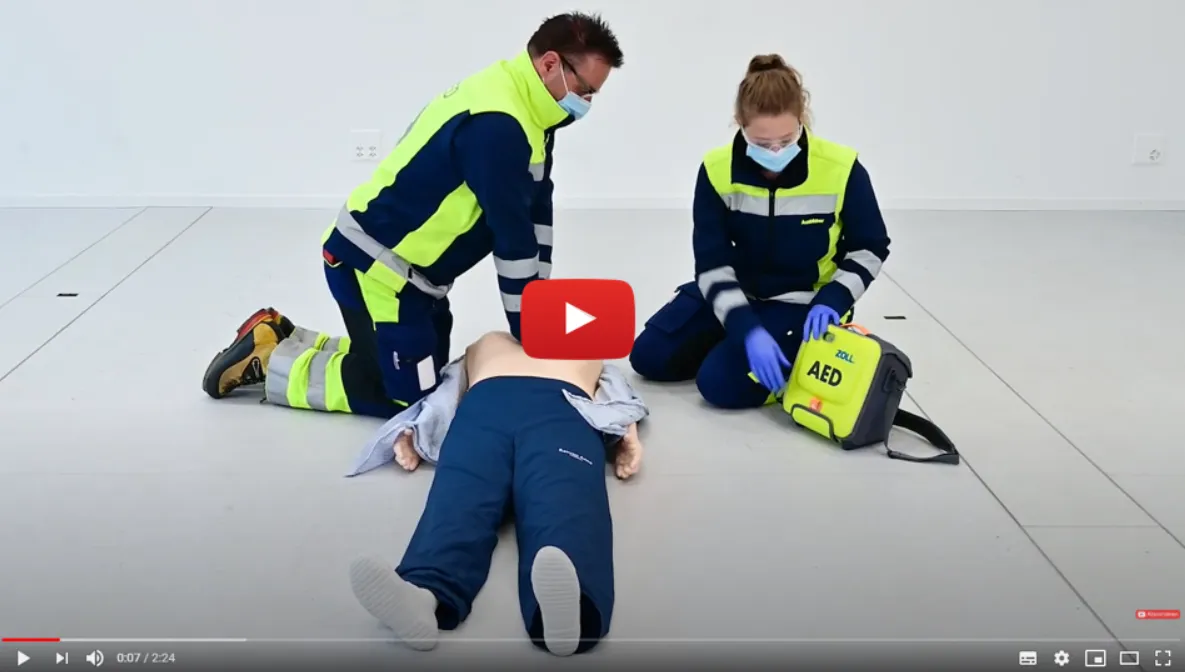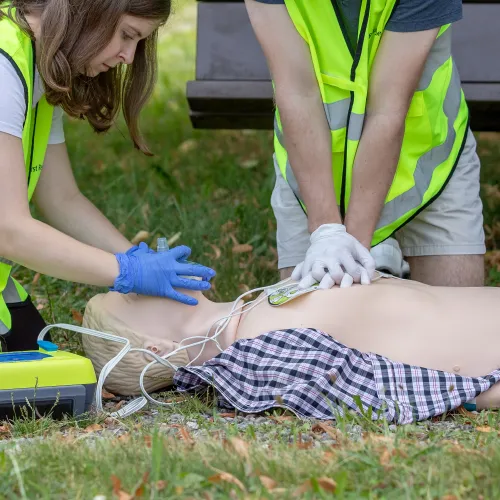Dare to help!
What to do in an emergency?
Anyone can witness an emergency situation at some point and have to provide first aid – or even need first aid themselves.
Those who do not deal with emergency situations on a regular basis will hardly be able to prepare for all possible cases and many people express fear of such situations.
Therefore, we would like to present some simple procedures for a selection of the most common and important emergency situations. They are primarily intended to accompany our various seminars for first responders.
Cardiac arrest and resuscitation are covered separately under the page BLS-AED.
144 for all medical emergencies
Medical Disclaimer
The following statements are made in accordance with (inter)national guidelines, as well as they are updated and revised to the best of our knowledge. They are in no way a substitute for specific training. Their application requires expertise, experience and situational flexibility. The actions described explicitly presuppose the user's mastery of the measures and must not replace or delay alerting the emergency medical service EMS. In case of doubt, consult a physician or emergency medical service EMS.
In two chapters, medications are listed (aspirin for non-traumatic chest pain and epinephrine auto-injector for severe allergic reaction) in accordance with international recommendations. We expressly point out that the legislator in Switzerland legitimizes the corresponding drug administration only for medical professionals, which is why the use or the delegation framework must be clarified in advance and for the specific conditions of the user and institutional setting. In this regard, SIRMED does not assign competencies to first aiders.
Attention: Despite all care taken in the editorial preparation, errors can never be completely excluded. Therefore, no legal guarantee can be assumed for the information provided. The user must always keep up to date with the latest literature. We are grateful for constructive criticism and suggestions for improvement. Any liability claims resulting from the use of the following statements are rejected.
By continuing to read at this point, you declare that you have read and understood the instructions for use and accept the statements on disclaimers and responsibilities in all points.
Introduction
When hazards have been ruled out, it is a matter of quickly recognizing whether a life threat is present and immediate life-saving measures are necessary. Emergency situations can be divided into three main groups according to their appearance:
Recognition: Responsive person
The patient is awake, responsive and able to respond. Such a patient will express needs for first aid. There is usually no immediate threat to life in this patient.
Recognition: Unconscious person
The patient is unconscious and unresponsive even to touch and loud addressing, but shows normal breathing. There is potentially a threat to life, and recovery position is necessary as an immediate life-saving measure. Since life threat takes precedence, this also applies if a back injury is suspected. The goal is to keep the airway clear and protect the patient from aspiration (entry of stomach contents into the lungs).
Recognition: Person in cardiac arrest
The patient is unconscious, unresponsive even to touch and loud addressing and not breathing or not breathing normally. This patient is in acute life-threatening danger and needs immediate resuscitation measures. Immediate measures are alerting, chest compression and ventilation. If a defibrillator (AED) is available, it should be used as soon as possible.
Further useful links
First aid also includes topics related to illnesses and injuries.
You might also be interested in
Any questions?

Anja Oehen
Werden Sie jetzt Mitglied und erhalten Sie im Ernstfall 250 000 Franken.
Spenden Sie jetzt und unterstützen Sie unsere Projekte zugunsten von Querschnittgelähmten.


